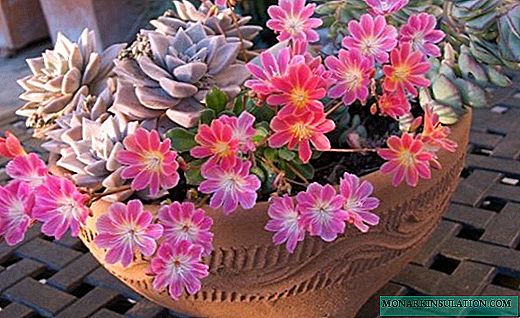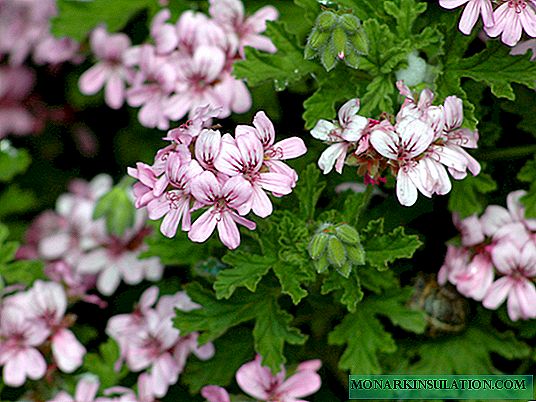
In the private sector, located within the city, it is usually possible to lay water from a centralized network. However, in settlements where initially there is no main pipeline, it is necessary to equip autonomous systems from hydraulic structures in the areas. However, sometimes such a need arises when accessing a central network. This happens if large areas need to be watered in the summer, and water bills are too large. In such cases, it is more profitable to build a well once. How to bring water to the house from a well or well?
Elements of a water supply system
In order to organize an uninterrupted supply of water to the points of water intake and provide the necessary pressure, the water supply scheme should include such elements:
- hydraulic engineering structure;
- pump equipment;
- accumulator;
- water treatment system;
- automation: manometers, sensors;
- pipeline;
- shutoff valves;
- collectors (if necessary);
- consumers.
Additional equipment may also be required: water heaters, irrigation, irrigation systems, etc.
Features of the choice of pumping equipment
For a stationary water supply system, submersible centrifugal pumps are most often chosen. They are installed in wells and in wells. If the hydraulic structure is of small depth (up to 9-10 m), then you can purchase surface equipment or a pumping station. This makes sense if the casing of the well is too narrow and there are difficulties with the choice of a submersible pump of the desired diameter. Then only a water intake hose is lowered into the well, and the device itself is installed in a caisson or utility room.
Pumping stations have their advantages. These are multifunctional systems - a pump, automation and a hydraulic accumulator. Although the cost of the station is higher than the submersible pump, in the end the system is cheaper, because there is no need to separately purchase a hydraulic tank.
Of the minuses of the pumping stations, the most significant are the strong noise during operation and the restrictions on the depth with which they are able to lift water. It is important to install the equipment correctly. If mistakes are made during the installation of the pumping station, it can be “airy,” which affects the stability of the water supply.

In order to organize uninterrupted operation of the water supply system, in addition to pumps, hydraulic tanks and automatic control units are installed

When choosing a pumping station, it is necessary to correctly calculate the required power, performance and buy equipment with high efficiency
There are cases when it is simply impossible to install a submersible pump and you have to mount a surface or pump station. For example, if the water level in a well or well is insufficient to comply with the rules for installing downhole equipment.
The pump should be installed so that there is a water layer of at least 1 m above it, and 2-6 m to the bottom. This is necessary for good cooling of the electric motor and intake of clean water without sand and silt. Failure to comply with the installation conditions will lead to rapid wear of the pump due to pumping of contaminated water or burnout of the motor windings.
When choosing a submersible pump for a well, you need to pay attention to the type of device design. If a three-inch production pipe is installed, many well owners buy a cheap and reliable domestic Malysh pump. The diameter of its housing allows you to mount the device even in narrow pipes. However, for all its merits, Baby is the worst choice. This equipment is of vibration type.
Constant vibration of the engine quickly destroys the production casing. Savings on the pump can result in much greater expenses for drilling a new well or replacing a casing, which is comparable in cost and laboriousness to the construction of a hydraulic structure. Vibration pumps are not suitable for narrow wells due to the nature of the device and the principle of operation. It is better to put a pump station.

The downhole pump is lowered into the well on a safety cable. If it is necessary to dismantle it, then it should also be lifted by the cable and in no case should it be pulled by the water pipe
Accumulator - a guarantee of uninterrupted water supply
The presence of a storage tank in the water supply system prevents the appearance of many problems with the supply of water to the house. This is a kind of analogue of a water tower. Thanks to the hydraulic tank, the pump works with lower loads. When the tank is full, the automation switches off the pump and turns it on only after the water level drops to a certain level.
The volume of the hydraulic tank can be any - from 12 to 500 liters. This allows you to provide some water in case of a power outage. When calculating the volume of the accumulator, take into account that on average about 50 liters are needed to meet the water needs of one person. Every day about 20 liters are taken from each water draw point. Water consumption for irrigation should be calculated separately.
There are two types of accumulators - membrane and storage. The first are usually small in volume, equipped with a pressure gauge and non-return valve. The task of such a hydraulic tank is to provide the necessary pressure in the water supply. Storage tanks of a much larger volume. Filled, they can weigh up to a ton.
Volumetric containers are mounted in attics, therefore, when designing a water supply system, it is necessary to foresee the need for strengthening building structures in advance and think over thermal insulation for the winter period. The volume of water in the storage tank is sufficient to have enough water for at least a day when a power outage occurs.
The generator will help ensure constant power supply, read about it: //diz-cafe.com/tech/kak-vybrat-generator-dlya-dachi.html

There are many designs of accumulators. Depending on the location, you can choose a vertical or horizontal model
HDPE pipes - a simple and reliable solution
On sale, you can still find water pipes from any materials - steel, copper, plastic, metal plastic. Increasingly, owners of country houses prefer HDPE pipes (from low-pressure polyethylene). They are not inferior in quality to metal, while they do not freeze, do not burst, do not rust, do not rot.
High-quality HDPE pipes can last up to half a century. Due to their low weight, unified connecting and fastening elements, they are relatively easy to install. For an autonomous water supply system - this is ideal, and every year more and more homeowners choose it. Typically, pipes with a diameter of 25 or 32 mm are bought for water supply.

Polyethylene is elastic. It stretches and contracts depending on the ambient temperature. Due to this, it retains its strength, tightness and original shape.
Laying the outside of the pipeline
When constructing a water supply system, it is necessary to ensure the connection of the pipeline to the water pipe below the level of soil freezing. The best option for connecting a well is installation through a pitless adapter.
This is a simple and cheap device designed specifically for the removal of pipes from the production casing of a well. How to equip a well with a pitless adapter is described in detail in the video:
If for some reason it is impossible to connect through the adapter, you will have to build a pit or mount a caisson. In any case, the connection to the pipeline should be at a depth of not less than 1-1.5 m. If a well is used as a source, a hole must be punched at its base to enter the pipe. Later, when all pipe work is completed, the input is sealed.
Further the scheme is approximately the same for both the well and the well. For laying the pipeline, a trench is prepared from the hydraulic structure to the walls of the house. Depth - 30-50 cm below the freezing level. It is advisable to immediately provide a slope of 0.15 m per 1 m of length.
You can find out about the features of the water supply device at home from the well from the material: //diz-cafe.com/voda/vodosnabzheniya-zagorodnogo-doma-iz-kolodca.html
When the trench is dug up, its bottom is covered with a layer of sand 7-10 cm, after which it is watered, rammed. Pipes are laid on the sand cushion, connected, hydraulic tests are carried out at a pressure 1.5 times higher than the planned working one.
If everything is in order, the pipeline is covered with a layer of sand 10 cm, rammed without excessive pressure so as not to break the pipe. After that, they fill the trench with soil. Together with the pipes they lay the pump cable, isolate. If necessary, it is increased if the standard length is not enough to connect to a power source. The standard electrical cable for the pump is 40 m.

When preparing trenches for the pipeline, a sand cushion must be equipped. This is necessary so that a sharp cobblestone from the ground does not break through and does not seal the pipe
How else can you bring water to the house? If the house is located in severe climatic conditions or the owner decided to lay the pipeline so as not to depend on the depth of freezing of the soil, that is, options for arranging an external water supply:
- The pipeline is laid at a depth of 60 cm and covered with a 20-30-cm layer of a warming mixture - expanded clay, polystyrene foam or coal slag. The main requirements for the insulator are minimal hygroscopicity, strength, lack of compaction after tamping.
- It is possible to organize an external water supply at a shallow depth of 30 cm, if the pipes are insulated with special heaters and a corrugated casing.
- Sometimes pipes are laid with a heating cable. This is a great outlet for areas where in winter crackling frosts rage.
It will also be useful material on the organization of permanent and summer options for water supply in the country: //diz-cafe.com/voda/vodoprovod-na-dache-svoimi-rukami.html
Putting the pipeline into the house
They conduct water from the well into the house through the foundation. The pipeline most often freezes at the point of entry, even if it is laid in accordance with all the rules. Concrete is well-permeable, and this contributes to pipe problems. To avoid them, you need a piece of pipe of a larger diameter than the water pipe.
It will serve as a kind of protective case for the entry point. To do this, you can choose a pipe from any available material - asbestos, metal or plastic. The main thing is that the diameter be significantly larger, because need to lay a water pipe with heat-insulating materials. For a water pipe of 32 cm, a pipe case 50 cm is taken.
The pipeline is insulated, put into a protective structure, then stuffed to get maximum waterproofing. A rope is hammered in the middle, and from it to the edge of the foundation - clay, diluted with water to the consistency of thick sour cream. It is an excellent natural waterproofing agent. If you do not want to prepare the mixture yourself, you can use polyurethane foam or any suitable sealant.
The pipeline inlet should be located in the foundation itself, and not underneath, because After pouring, do not touch the soil under the structure. Similarly, a sewer pipeline is introduced through the foundation. Between the inputs of the water supply and sewage systems there must be at least 1.5 m.
You can learn more about the rules of the sewage system in the country from the material: //diz-cafe.com/voda/kak-sdelat-kanalizaciyu-dlya-dachi.html

For insulation use materials with a thickness of about 9 mm. This protects the pipeline from deformation during shrinkage.
Internal piping
After you have spent water in a private house, you need to choose the scheme and type of internal wiring. It can be open or closed. The first method assumes that all pipes will be visible. It is convenient from the point of view of repair and maintenance, but from the point of view of aesthetics it is not the best option.
Closed pipe laying is a way of placing them in the floor and walls. Communications are completely masked, they are not visible under the fine finish, however this is a laborious and costly process. If you have to repair the pipes, then the entire room where you will need access to them will also require an update to the finish.

Most often, an open method of laying pipes of an internal water supply system is used. This is much cheaper and more convenient than wall chipping to mask communications. Pipes made of polymeric materials look good and are better suited for open systems than metal ones
Distinguish such wiring diagrams:
- collector;
- tee;
- mixed.
With the collector type of wiring, a collector (comb) is installed. Separate pipes go from it to each plumbing fixture. This type of wiring is suitable for both types of pipe laying - open and closed.
Due to the presence of a collector, the pressure in the system is stable, but this is an expensive undertaking, as requires a large amount of materials. A significant advantage of this scheme is that during the repair of one plumbing fixture, the water supply of the rest is possible in the previous mode.

Installation of collector wiring costs significantly more than a tee, but these costs pay off. Leaks most often occur at joints. With a collector circuit of joints, a minimum
The tee pattern is also called sequential. Plumbing fixtures are connected in series one after another. The advantage of the method is its cheapness and simplicity, and the disadvantage is the loss of pressure. If several devices work simultaneously, the pressure decreases markedly.
When repairing at one point, you have to turn off the entire water supply system. The mixed scheme provides for the collector connection of mixers and serial - plumbing fixtures.

Serial connection of plumbing fixtures is the cheapest and most convenient option. However, such a scheme may well lead to the fact that when you open a cold tap in the kitchen in the bathroom, the water temperature will increase sharply
In most cases, pipes made of polymeric materials are chosen for internal water supply. They are easier to install than metal, plus there is no need to pay extra for welders. The only caveat: it is advisable to use metal to connect the toilet to the system, because polymer pipes do not always cope with sudden changes in pressure. We also recommend reading about the features of pipe routing in the bathroom on the Vanpedia website.
To drain water from the system if necessary, install a separate tap. When the internal water supply is fully assembled, its operation is checked. If there are no leaks, the pressure at all points of the tapping is normal, the system can be put into operation.
Video example of arranging a water supply system inside a house:
When designing an autonomous water supply system, the need to install filters and water treatment systems should be taken into account. They can differ significantly in function, type of construction and connection to the water supply. To choose the right filters, you need to do a water analysis to determine if there are any unwanted impurities. If chemical and microbiological analyzes of water are in order, then only a rough treatment of water from sand, silt and dirt will be sufficient. If not, it is better to select equipment after consultation with specialists.











